Global Environmental Change: Its effects on the Climate, Sea Level, Geomorphology and Biosphere.
EXERCISE #3
DATE: Wednesday 1st November, 2023.
What is Global Environmental
Change?
Global Environmental Change (GEC) is an integrative and
cyclical process related to human actions which negatively transform natural
systems, such as oceans, land, ice, the biosphere, atmosphere and elemental cycles on a planetary scale (Butler and McFarlane 2018, 454).
Since modern society exists within the anthropocene, shifts upon environmental systems are increasing, specifically in the form of global warming and climate change. Deforestation, energy production and consumption, population growth, agricultural production (crop and livestock), urbanization, transportation, etc. are some human driven causes of Global Environmental Change (Pyhälä et al. 2016).
Multiple large-scale and local physical and biological processes, for instance biodiversity loss, freshwater depletion, ocean acidification, aquifer contamination, ecosystem degradation, species extirpation and waste production have also driven Global Environmental Change.
v Rising Temperatures, Climate Change, Water Scarcity, Higher Death Rates, Land Degradation, Longer Drought Periods, Ocean Acidification, Rising Sea Levels, Health Impacts upon Humans, More Frequent and Sever Weather Events and Increased Rates of Wildlife Extinction (Biodiversity Loss).
Source: Swamirara 2017 (swamirara.wordpress.com).
What are the Effects of Global Environmental Change on
the Climate, Sea Level, Geomorphology and Biosphere?
THE CLIMATE
Global Environmental Change affects the climate when atmospheric greenhouse gases, being nitrous oxide (N2O), methane (CH4) and mainly carbon dioxide (CO2), increases in concentration. Atmospheric CO2, as reported by Allen and Allen (2017, 220), has risen from 320ppm during the 1950s to approximately 410ppm in 2016. As these gases multiply, they trap heat, warming the planet to cause climate change. Below lists the effects of Global Environmental Change on the climate:
Increased Temperatures

Image 3: Timelapse of "old" ice melt in the Arctic (1987-2013).
Source: Planet Aid, Inc. 2014 (planetaid.org).
Habitat and Wildlife shifts
The behavior and distribution of numerous fauna and flora are affected by GEC. Habitat fragmentation and loss cause some species to face possible extinction, whereas others are forced to migrate to higher latitudes in search of suitable conditions and food (MetOffice, n.d.). Such shifts disrupt food webs, ecological interactions, population growth and human culture and well-being, but instigates negative competition through survival of the fittest.
Modified Precipitation Patterns
Global Environmental Change modifies the intensity, amount, distribution and frequency of snowfall and rainfall worldwide. However, unlike some regions, for instance the Caribbean which face more natural disasters such as hurricanes, floods and soil erosion, others experience less water availability, severe droughts, lower crop production and even livestock death. This can be seen in semi-arid and arid regions like Southern Africa, the Mediterranean and South-Central U.S. According to Bralower and Bice (n.d.), water availability is estimated to fall by 10-30% by 2050 and regions that are already dry will most likely become drier by the next century.
Amplified Extreme Natural Disasters
The frequency, intensity, trajectory and probability of adverse weather events, particularly hurricanes, blizzards, heat waves and wildfires, are increased by GEC. As seen globally and in Caribbean region, specifically in the Trinidad and Tobago, these natural disasters affect infrastructure, private and commercial property, ecosystems (both its systems and organisms) and especially human life. As such, these disasters exacerbate social inequality and vulnerable populations.
Source: Ramdass 2018 (trinidadexpress.com).
Ice Melt and Rising Sea Levels
Due to Global Environmental Change, ice sheets, glaciers, permafrost, sea ice, etc. melt at accelerated rates, giving way to sea level rise. This threatens ecosystems, human life, infrastructure and coastal communities. It must also be noted that sea level rise causes coastal erosion, coral reef damage, storm surges, saltwater intrusion and many more risks to flora, fauna and human society and assets (National Geographic Society2015).
As aforementioned, Global Environmental Change causes rising sea level, however, this is done in two ways. Either through Thermal Expansion or Melting Ice.
Warming ocean waters influences thermal expansion while rising temperatures, causing ice sheets, permafrost and glaciers to melt, adds more water to oceans. Nevertheless, both processes influence sea level rise which increases the volume of ocean waters. Sea levels are anticipated to increase > 26-82 centimeters by the end of the 21st century (National Geographic Society 2015). Below briefly explains the effects of Global Environmental Change on Sea Level:
Loss of Ecosystem Services and Biodiversity
Marine and coastal habitats, such as salt marshes, mangroves, estuaries, seagrasses and coral reefs, provide crucial services to ecosystems, for instance tourism, storm protection, food, conservation of biodiversity and carbon sequestration (United Nations, n.d.). Due to rising sea levels, the growth and survival of plants and animals (biodiversity) are threatened. This can be seen in the Mediterranean vermetid reefs on the Israeli coast (Rilov et al. 2021, 148377).
The depth, frequency, extent and probability of coastal erosion and flooding increases due to Sea Level Rise. This is paramount during storm surges and high tide conditions, reducing the natural protection wetlands, corals reefs and beaches provide. Damage to coastal property, ecosystems, infrastructure and communities occur, leading to displacement of persons, especially in low-lying areas (Lindsey 2022). This is evident in India where 4.5 million persons are affected annually due to river erosion (Prasad 2023).


Sources: Prasad 2023 (downtoearth.org.in); Nath 2020 (indiatoday.in).
Industry, Economy and Social Impacts
The economy, agricultural, industrial and commercial buildings and industries are greatly affected by inundation and erosion as sea levels rise. This not only causes loss to beach amenities, impacting local tourism industries and local economies, but also existing and future coastal developments (Lindsey 2022). In Tobago, sea level rise affects its tourism industry as damaged reefs reduces tourist travel into the island, affecting its local economy in gaining foreign capital. Socially, the security, health, culture, safety and livelihood of human society is also affected by sea level rise. As such, having to adopt mitigation and adaptation measures for instance habitat restoration, building sea walls and individual and asset relocation is very costly, affecting economic stability.
Source: WRI 2008 (wri.org).
Fresh Groundwater Depletion and Saltwater Intrusion
Decreased sea level lowers the groundwater table, specifically in coastal areas, causing difficulty in accessing freshwater resources. Also, the quality and quantity of potable irrigation and drinking water, even aquatic habitats, is affected by saltwater intrusion. Rising sea levels intrude freshwater sources of lakes, rivers and aquifers with saltwater. Moreover, in the case of reduced water availability due to GEC, certain areas become colder. This lowers the availability of freshwater as glaciers store ¾ of global freshwater (National Geographic Society 2015).
Geomorphology studies the surface, evolution and processes that shape Earth. Modifications to the patterns and rates of weathering, erosion, plate tectonics and deposition are some ways in which Global Environmental Change affects landscape geomorphology. Below lists some effects of GEC on geomorphology:
Coastal landscapes
GEC alters the supply and transport of sediments along coasts, causes differences in tide and wave forces and leads to increased sea level. As seen in the latter, loss of wetlands, coastal erosion, flooding and even saltwater intrusion occurs. Also, dune formation and beach profiles are altered by the changing dynamics of waves and tides, resulting in the migration of barrier islands when storms, sediment supply, waves and sea level rise affects them. This is evident in the United States Atlantic Coast. Sea level rise is exacerbating the migration of barrier islands landward through over wash, meaning the sediments are being deposited onto the back barrier marsh (McNeill 2019).
Glacial and Periglacial Landscapes
Ice sheets, glaciers and permafrost melt and retreat due to global warming. Solifluction, frost heave, thermokarst and more are formed when permafrost melts, while moraines, outburst floods, eskers, ice-wedge casts and glacial lakes are formed due to glacial and periglacial melting. As such, the landforms, hydrology and ability to transport sediments are affected as temperatures continue to rise (Goudie 2010, 246).
Aeolian Landscapes
The direction, variability, velocity and frequency of wind in aeolian regions are highly affected due to GEC. Amplified wind speed results in abrasion and deflation of landscapes, causing the presence of more dunes. As such, the deposition, transportation and erosion of dust and sand particles are affected when wind speeds increase. Also, the deposition of dust, increased vegetation cover and stabilized soils are more present when wind speed minimizes (Slaymaker et al. 2009).
Fluvial Landscapes
Global Environmental Change affects the sediment load,
morphology, discharge and flow of rivers. This is influenced by differences in runoff,
evaporation rates and precipitation patterns of river basins. This in turn
increases flooding, channel migration, erosion and damage to
ecosystems. However, in the case of more warming conditions globally, channel
narrowing, droughts and deposition proliferates when precipitation reduces.
The Biosphere supports life on Earth, forming connections with the atmosphere, hydrosphere, lithosphere, pedosphere, etc. GEC affects the biosphere by causing habitat destruction, degradation, pollution, fragmentation, overexploitation and the invasion of foreign species, all leading to biodiversity loss. These decrease the ability of ecosystems to not only provide key services for flora, fauna and humans, being water, food, medicine, etc., but its resilience and adaptation capacities. Below examines how Global Environmental Change affects the Biosphere in more detail:
Altered Productivity and Ecosystem Functioning
The patterns and rates of nutrient cycling, energy flows and the provision of services, being water, food, etc. to humans, plants, animals and even microorganisms, is significantly impacted by Global Environmental Change. GEC increases the intensity and frequency of pest and disease outbreaks, wildfires, etc., and also triggers global climate change, limiting the storage of carbon and the ability of plants to photosynthesize.
Changing the Diversity and Distribution of Living
Organisms
Some species are forced to migrate, shift their communities, occupy new habitats or may become extinct due to Global Environmental Change. This impacts the functioning of ecosystems and its structure, stability and ability of one ecosystem to form interactions with others (The Royal Society 2023).
Source: Trisos 2020 (it-online.co.za).
Feedback and Uncertainties in the Earth System Created
By either dampening or heightening the effects of
climate change on the biosphere and its counterparts, such feedback is generated
because of Global Environmental Change. Also, difficulty in managing and predicting effects
to the biosphere cause uncertainties in its outcomes and responses. In relation
to feedback, an example is where more greenhouse gases are released into the
atmosphere when permafrost melts which causes further global warming and ice melt (UNEPA 2022).
Amplified Vulnerability and Exposure of Organisms to
Stressors
Global Environmental Change exposes micro and macro-organisms
to multiple stressors, for instance drought, extreme storms, pollutants, higher
temperatures, invasive species, floods, heat waves, etc. (National GeographicSociety 2023). These increase organism vulnerability to other harsh
conditions as the ability of organisms to adapt and be resilient to these
stressors reduces, causing their population to decline or their mortality rates
to increase.
Global Environmental Change encompasses multiple complex challenges beyond increases in temperature which causes significant effects to the Climate, Sea Level, Geomorphology and Biosphere. As such, though humans primarily contribute toward such effects, it is humans which need to develop mitigative approaches to address these effects sustainably so that global environmental systems thrive.
One more topic to go guys!!
The end is near, see you soon!
REFERENCES
- Allen, M.F., and E.B. Allen. 2017. “Chapter 12 -
Mycorrhizal Mediation of Soil Fertility Amidst Nitrogen Eutrophication and
Climate Change.” In Mycorrhizal Mediation of Soil, 213–31. Elsevier
Inc. https://doi.org/10.1016/B978-0-12-804312-7.00012-7.
- Bralower,
Timothy and David Bice. n.d. “Climate Change Predictions.” Accessed October
23, 2023. https://www.e-education.psu.edu/earth103/node/902#:~:text=Thus%2C%20arid%20and%20semi-arid%20regions%20in%20the%20south-central,availability%20is%20projected%20to%20decrease%2010-30%25%20by%202050.
- Butler, C.D., and R.A. McFarlane. 2018. “Climate Change, Food Security, and Population Health in the Anthropocene.” In Encyclopedia of the Anthropocene, 453–59. Elsevier Inc. https://doi.org/10.1016/B978-0-12-809665-9.09745-7.
- Dakar, Paris. 2009. “Natural Bellvitge.” Accessed October 25, 2023. https://blocs.xtec.cat/cienciesnaturaslbellvitge/2009/01/12/la-sedimentacio-eolica-i/
- Goudie, Andrew S. 2010. “Geomorphological hazards and global climate change.” In Geomorphological Hazards and Disaster Prevention, edited by Irasema Alcántara-Ayala and Andrew S. Goudie, 245-256. Cambridge: Cambridge University Press. doi:10.1017/CBO9780511807527.020.
- Hawkey, Jane. 2011. “Saltwater Intrusion on Barrier
Islands.” Accessed October 25, 2023. https://ian.umces.edu/media-library/saltwater-intrusion-on-barrier-islands/.
- Khosla, Simran. 2015. “These Time-Lapse GIFs of Earth Are Terrifying, Courtesy of NASA.” Accessed October 24, 2023. https://matadornetwork.com/pulse/time-lapse-gifs-earth-terrifying-courtesy-nasa/.
- Lindsey,
Rebecca. 2022. “Climate
Change: Global Sea Level.” Accessed October 23, 2023. https://www.climate.gov/news-features/understanding-climate/climate-change-global-sea-level.
- Met Office. n.d. “Effects of
climate change.” Accessed October 23, 2023. https://www.metoffice.gov.uk/weather/climate-change/effects-of-climate-change.
- McNeill, Brian. 2019. “Study gives new insight into how climate change is transforming Virginia’s barrier islands.” Accessed October 23, 2023. https://news.vcu.edu/article/Study_gives_new_insight_into_how_climate_change_is_transforming.
- National Geographic Society. 2015. “Effects of global warming.” Accessed October 23, 2023. https://www.nationalgeographic.com/environment/article/global-warming-effects.
- Nath, Kumar. 2020. “River swallowed everything: Over 5 lakh families landless due to flood, soil erosion in Assam.” Accessed October 24, 2023. https://www.indiatoday.in/india/story/river-swallowed-everything-lakh-families-landless-flood-soil-erosion-assam-1698703-2020-07-09.
- NASA Tumblr. 2020. “Sea Level Rise is on the Rise.” Accessed October 24, 2023. https://nasa.tumblr.com/post/633974211755524096/sea-level-rise-is-on-the-rise?is_related_post=1.
- National Geographic Society. 2023. “The Influence of Climate Change on Extreme Environmental Events.” Accessed October 23, 2023. https://education.nationalgeographic.org/resource/influence-climate-change-extreme-environmental-events/.
- Planet Aid, Inc. 2014. “What Climate Change Looks Like (In 6 GIFs).” Accessed October 25, 2023. https://www.planetaid.org/blog/what-climate-change-looks-like-in-6-gifs
- Pyhälä, Aili, Álvaro Fernández-Llamazares, Hertta Lehvävirta, Anja Byg, Isabel Ruiz-Mallén, Matthieu Salpeteur, and Thomas F. Thornton. 2016. “Global Environmental Change.” Ecology and Society 21 (3): 25. https://doi.org/10.5751/ES-08482-210325.
- Pecl, Gretta T., Miguel B. Araújo, Johann D. Bell, Julia Blanchard, Timothy C. Bonebrake, I-Ching Chen, Timothy D. Clark, et al. 2017. “Biodiversity Redistribution Under Climate Change.” Science (American Association for the Advancement of Science) 355 (6332): 1389–1389. https://doi.org/10.1126/science.aai9214.
- Prasad, Seema. 2023. “New policy to help Indian communities displaced by annual river & coastal erosion drafted.” Accessed October 23, 2023. https://www.downtoearth.org.in/news/environment/new-policy-to-help-indian-communities-displaced-by-annual-river-coastal-erosion-drafted-87862.
- Ramdass, Anna. 2018. “National Disaster Declared.” Accessed October 24, 2023. https://trinidadexpress.com/news/local/national-disaster-declared/article_16ff68d4-d47a-11e8-9e2f-e3a80bd3c43c.html.
- Rilov, Gil, Niv David, Tamar Guy-Haim, Dar Golomb,
Reuma Arav, and Sagi Filin. 2021. “Sea Level Rise Can Severely Reduce
Biodiversity and Community Net Production on Rocky Shores.” The Science
of the Total Environment 791: 148377. https://doi.org/10.1016/j.scitotenv.2021.148377.
- Svirejeva-Hopkins, Anastasia, Hans J Schellnhuber, and Valeri L Pomaz. 2004. “Urbanised Territories as a Specific Component of the Global Carbon Cycle.” Ecological Modelling 173 (2): 295–312. https://doi.org/10.1016/j.ecolmodel.2003.09.022.
- Slaymaker, Olav, Thomas Spencer, and Christine Embleton-Hamann. 2009. Geomorphology and Global Environmental Change. New York, NY: Cambridge University Press. https://doi.org/10.1017/CBO9780511627057.
- Swamirara. 2017. “Essay on Global Warming – Causes, Effects and Solution.” Accessed October 24, 2023. https://swamirara.wordpress.com/2017/07/24/essay-on-global-warming-causes-effects-and-solution/.
- Trisos, Christopher. 2020. “Climate change to cause abrupt species loss this century.” Accessed October 25, 2023. https://it-online.co.za/2020/04/09/climate-change-to-cause-abrupt-species-loss-this-century/.
- The Royal Society. 2023. “How does climate change affect biodiversity?” Accessed October 23, 2023. https://royalsociety.org/topics-policy/projects/biodiversity/climate-change-and-biodiversity/.
- United Nations. n.d. “How is climate change impacting the world’s ocean.” Accessed October 23, 2023. https://www.un.org/en/climatechange/science/climate-issues/ocean-impacts.
- United States Environmental Protection Agency (UNEPA). 2022. “Climate Change Impacts on Ecosystems.” Accessed October 23, 2023. https://www.epa.gov/climateimpacts/climate-change-impacts-ecosystems.
- World Resources Institute (WRI). 2008. “Shoreline Protection by Coral Reefs – Tobago.” Accessed October 23, 2023. https://www.wri.org/data/shoreline-protection-coral-reefs-tobago#:~:text=Southwest%20Tobago%20is%20characterized%20by%20a%20lagoonal%20system,was%20classified%20as%20protected%20by%20a%20coral%20reef.
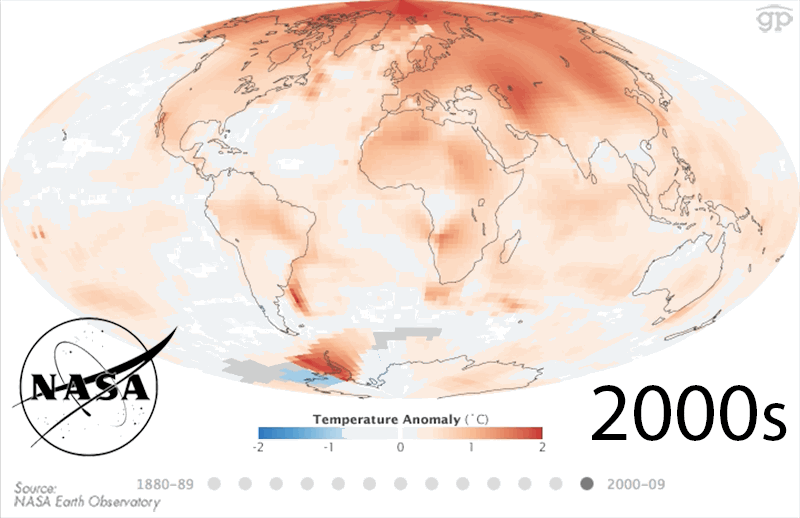



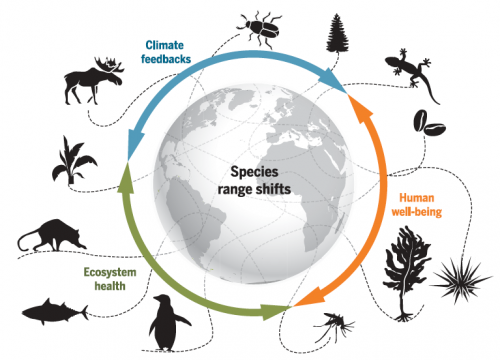
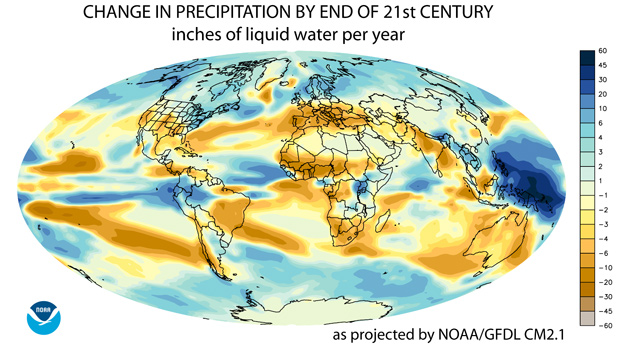
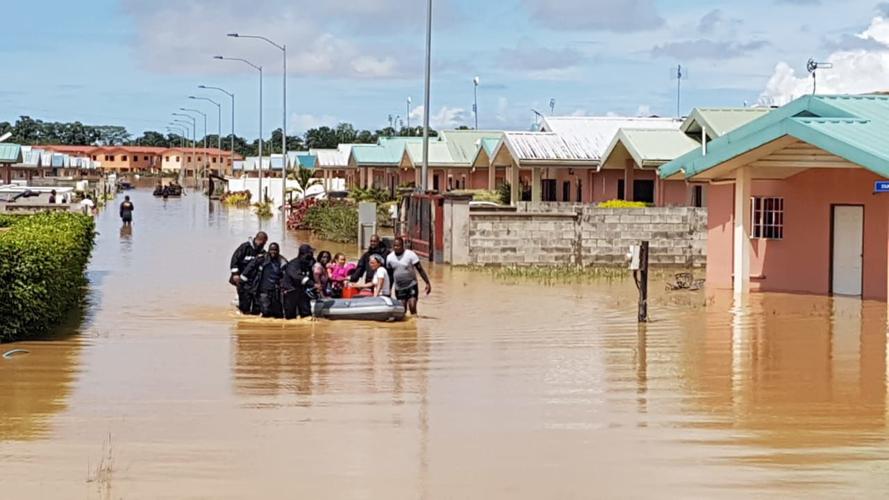
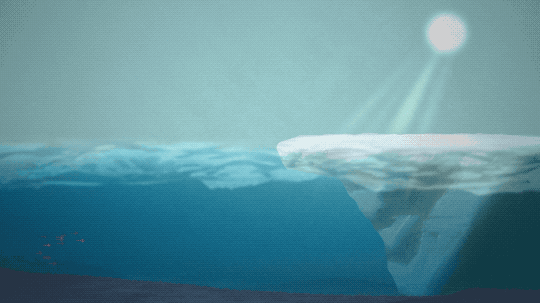
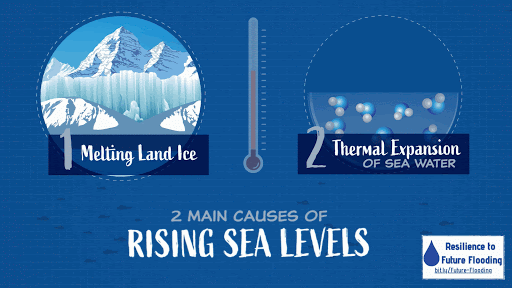










Comments
Post a Comment